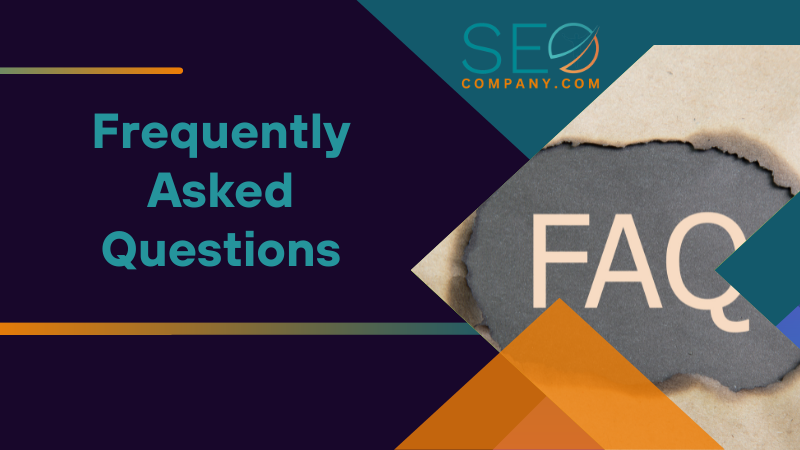
Imagine a world where your content consistently ranks high on search engine results pages, attracting a steady stream of organic traffic and converting readers into loyal customers. Sounds like a dream, doesn’t it? Well, mastering the art of SEO content writing can turn this dream into reality. In today’s competitive digital landscape, creating high-quality, keyword-focused content is crucial for boosting your website’s visibility and generating organic traffic. But how do you achieve this delicate balance between optimization and readability? Fear not, for this comprehensive guide will equip you with the knowledge and techniques to become a successful SEO content writer.
Executive Summary
- SEO content writing involves creating optimized, engaging content to generate organic search traffic.
- Keywords play a critical role in SEO copywriting and should be used naturally while providing value to readers.
- Establish objectives, conduct competitor analysis, track performance data and make necessary adjustments for an effective SEO strategy.

Understanding SEO Content Writing
As the internet continues to grow exponentially, the importance of SEO content writing has never been more significant. A successful SEO content writer crafts high-quality content that is both engaging and optimized for search engines like Google, ensuring a prominent position on search engine results pages (SERPs). To write content effectively, an SEO content writer must generate organic search traffic by targeting specific keyword phrases and addressing user needs.
But what exactly goes into creating effective SEO content? The answer lies in understanding two key aspects: the role of keywords and balancing readability with optimization.

The Role of Keywords
Keywords are the backbone of SEO content writing, bridging user queries and relevant content. Search engines like Google rely on keywords to understand and index web pages, ultimately displaying the most relevant results to users. An experienced SEO copywriter knows how to strategically incorporate keywords into content without compromising its natural flow and readability, a skill known as SEO copywriting.
Including related words and phrases is essential, as this helps search engines better comprehend the subject matter and boost your content’s search engine optimization. Remember, the goal is to provide value to the end-user while optimizing for search engines. So, while keyword research is crucial, it’s equally important to focus on crafting engaging, informative, and user-centric content.

Balancing Readability and Optimization
Striking the perfect balance between readability and optimization is vital for crafting content that appeals to both users and search engines. Readability plays a crucial role in engaging users and preventing them from leaving your website due to dense, hard-to-understand content. On the other hand, optimization ensures that search engines can easily crawl, index, and rank your content, thereby improving its visibility on SERPs.
To achieve this balance, consider utilizing shorter sentences, forming smaller paragraphs, and incorporating relevant subheadings to break up the text. Additionally, avoid keyword stuffing and focus on using keywords naturally, such as in the title tag, as excessive use of keywords can lead to penalties from search engines and negatively impact user experience.
By prioritizing readability and optimization, you can create content that is both engaging and effective in driving organic traffic.

The SEO Content Writing Process
Now that we’ve covered the fundamentals of SEO content writing, it’s time to delve into the process itself. The SEO content writing process consists of three major steps: keyword research, content planning, and writing optimized content. By mastering each step, you can craft content that targets specific keywords and addresses search intent, ultimately improving your website’s search engine rankings and attracting more traffic.
Let’s take a closer look at each of these steps and discover how they contribute to creating high-quality, optimized content.

Keyword Research
Keyword research is the foundation of any successful SEO content writing strategy. It involves identifying relevant keywords and phrases to target in your content, taking into account factors like search volume and competition. By targeting the right keywords, you can ensure that your content ranks higher on SERPs and attracts a more qualified audience.
One valuable aspect of keyword research is the identification of long-tail keywords—more specific search terms with lower search volume but higher conversion rates. These keywords often indicate a user’s search intent, helping you create content that directly addresses their needs and expectations.
Utilizing keyword research tools, such as Semrush and Ubersuggest, can aid in uncovering these long-tail keywords and optimizing your content accordingly.

Content Planning
Once you’ve identified the right keywords to target, the next step is content planning. Content planning involves effectively organizing and structuring your content to address user needs and search intent. Planning your content carefully ensures that it is relevant, engaging, and optimized for search engines.
During the content planning process, consider the structure of your content, the specific needs of your target audience, and the search intent behind each keyword. Avoiding common pitfalls, such as keyword stuffing, duplicate content, and ignoring search intent, is also important. By addressing these areas, you can create a solid foundation for your content and improve its chances of ranking higher on SERPs.

Writing Optimized Content
With your keywords identified and content planned, it’s time to write optimized content that effectively targets specific keywords and search intent. This involves incorporating targeted keywords naturally into your content while maintaining readability and user engagement.
To ensure your content is both engaging and optimized, focus on providing value to the reader. Address their needs and expectations, answer any pertinent questions, and avoid excessive use of keywords. Additionally, make use of related words and phrases to help search engines better understand your content’s relevance to the topic.
By combining strategic keyword usage with high-quality, user-centric content, you can create a winning SEO content strategy.

Essential Tools for SEO Content Writers
In the ever-evolving world of SEO, having the right tools at your disposal can greatly enhance your content quality and effectiveness. There are three types of essential tools for SEO content writers: keyword research tools, content optimization tools, and analytics and performance tracking tools. By leveraging these tools, you can streamline your SEO content writing process, identify opportunities for improvement, and optimize your content for better search engine rankings and user engagement.
Let’s explore each of these tool categories and discover how they can help you create high-quality, optimized content.

Keyword Research Tools
As mentioned earlier, keyword research tools play a critical role in identifying relevant keywords and phrases to target in your content. These tools provide valuable insights into search volume, competition, and search intent for various target keywords, helping you make informed decisions about which target keyword to focus on.
Some popular keyword research tools include Semrush, Ubersuggest, and Google Keyword Planner. By harnessing the power of these tools, you can uncover high-potential keywords, identify long-tail keywords that address specific search intent, and optimize your content for better search engine visibility and performance.

Content Optimization Tools
Content optimization tools are designed to help you improve your content’s structure, readability, and keyword usage. These tools analyze your content and provide recommendations for enhancements, such as adding or removing keywords, reorganizing content structure, or improving readability.
Some popular content optimization tools include the Semrush SEO Writing Assistant, SurferSEO, and Clearscope. By using these tools, you can ensure that your content is not only engaging and readable, but also optimized for search engines, giving your website the best chance of ranking higher on SERPs.

Analytics and Performance Tracking Tools
Finally, analytics and performance tracking tools are essential for monitoring the performance of your content and identifying areas for improvement. These tools provide insights into metrics such as organic traffic, search engine rankings, user engagement, and conversions, helping you determine the efficacy of your SEO content strategy and make necessary adjustments.
Popular analytics and performance tracking tools include Google Analytics, Semrush, and Google Search Console. By regularly monitoring your content’s performance and making data-driven optimizations, you can continuously improve your SEO content strategy and achieve better results in terms of search engine rankings and user engagement on the search engine results page.

Common SEO Content Writing Mistakes to Avoid
As you embark on your SEO content writing journey, it’s essential to be aware of some common pitfalls that can hamper your success. By avoiding these mistakes, you can ensure that your content is engaging and readable and optimized for search engines, ultimately improving your website’s visibility and organic traffic.
Let’s discuss three common SEO content writing mistakes to avoid: keyword stuffing, duplicate content, and ignoring search intent.

Keyword Stuffing
Keyword stuffing is a common yet detrimental practice in SEO content writing. It involves excessively using popular keywords or phrases in an attempt to manipulate search engine rankings. This can lead to a negative user experience, as content becomes difficult to read and understand, and search engines may penalize your website for employing this unethical tactic.
To avoid keyword stuffing, focus on using keywords naturally and judiciously within your content. Remember that providing value to the end-user should be your top priority, so strive to create engaging, informative content that addresses their needs and expectations while incorporating keywords in a natural manner.

Duplicate Content
Duplicate content is copied or closely replicated from another source, either on your own website or another website. Search engines, such as Google, may penalize your website for featuring duplicate content as they struggle to determine which version of the content to prioritize in search results.
To avoid duplicate content issues, ensure that all of your content is unique and original. Doing so can improve your website’s search engine rankings and provide a better user experience for your readers.

Ignoring Search Intent
Ignoring search intent is another common mistake in SEO content writing. This occurs when content is created without considering the user’s intent when searching for a specific topic. As a result, the content may not address the user’s needs and expectations, leading to lower engagement and search engine rankings.
To avoid this pitfall, it’s essential to understand search intent and create content that directly addresses the user’s needs and expectations. This can be achieved through thorough keyword research and by analyzing user behavior to better understand their motivations, pain points, and desired outcomes when searching for specific keywords.

Tips for Creating High-Quality SEO Content
With a solid understanding of the fundamentals of SEO content writing and the common mistakes to avoid, it’s time to explore some tips for creating high-quality content that engages your readers and ranks well on search engines. By implementing these tips, you can ensure that your content is not only optimized for search engines, but also provides value and a positive user experience.
Let’s delve into three tips for creating high-quality SEO content: focusing on readability, incorporating multimedia elements, and updating and refreshing existing content.

Focus on Readability
Readability is critical to SEO content writing, as it directly impacts user engagement and search engine rankings. Ensuring that your content is easy to read and understand is essential for captivating your audience and keeping them on your website longer.
To enhance readability, consider employing shorter sentences, forming smaller paragraphs, utilizing active voices, and avoiding jargon and technical terms. By focusing on readability, you can improve the quality of your content and its performance in search engine rankings, ultimately attracting more organic traffic and conversions.

Incorporate Multimedia
Incorporating multimedia elements like images, videos, and infographics can greatly enhance the user experience and content quality. Multimedia elements not only make your content more visually appealing and engaging but also help break up long blocks of text, making it easier to read and digest.
When selecting and creating multimedia elements, ensure they are relevant to your content and of high quality. Additionally, optimize your multimedia elements for search engines by including descriptive alt text for images, proper video metadata, and an effective meta description.
By incorporating multimedia elements, your content will be more engaging and effective in driving organic traffic and achieving your objectives.

Update and Refresh Existing Content
Regularly updating and refreshing existing content is essential for maintaining relevance and staying current with the latest trends and information. By revisiting and improving your web page content, you can enhance its search engine rankings and attract more engaged website visitors.
To update and refresh your content, consider revising outdated information, providing actionable advice, and improving the user experience to address the searcher’s intent better. Doing so can ensure that your content remains relevant, engaging, and valuable to your readers, ultimately improving its performance on search engine results pages.

Building a Successful SEO Content Strategy
Creating high-quality SEO content is just one piece of the puzzle. To truly succeed in the competitive world of digital marketing, you need a well-crafted SEO content strategy that takes into account your specific objectives, competitors, and target audience. A successful SEO content strategy involves setting clear objectives, conducting competitor analysis, and monitoring and adjusting your strategy based on performance data.
Let’s explore each of these components in detail and discover how they contribute to building a successful SEO content strategy.

Set Clear Objectives
Setting clear objectives is a crucial first step in building a successful SEO content strategy. By establishing measurable goals, you can chart your course, monitor your progress, and optimize your processes to achieve the desired results.
Examples of clear objectives include increasing website traffic, improving conversions, enhancing brand awareness, and providing accurate and valuable information to your audience. Setting specific and achievable goals ensures that your SEO content strategy is focused, results-driven, and aligned with your overall business objectives.

Conduct Competitor Analysis
Competitor analysis is a vital component of a successful SEO content strategy. By analyzing your competitors’ content, you can identify gaps in your own content and uncover opportunities to outrank them by creating better, more relevant content.
To conduct competitor analysis, use keyword research tools to identify websites that target the same keywords and topics as your own. Then analyze their content to determine what they’re doing well and where you can improve. By understanding your competition, you can create a more targeted and effective SEO content strategy that addresses user needs and search intent.

Monitor and Adjust Your Strategy
Monitoring and adjusting your SEO content strategy based on performance data is essential for ongoing success. By regularly tracking and evaluating key metrics such as organic traffic, search engine rankings, engagement, conversions, and backlinks, you can identify areas for improvement and make necessary adjustments to your content strategy.
Leverage analytics and performance tracking tools like Google Analytics and Semrush to gain insights into your content’s performance. By continuously monitoring your content’s performance and making data-driven optimizations, you can refine your SEO content strategy, achieve better results, and stay ahead in the competitive world of digital marketing.

Bringing it Together
In conclusion, mastering the art of SEO content writing is a powerful tool in today’s digital landscape. By understanding the fundamentals of SEO content writing, avoiding common mistakes, implementing effective strategies, and building a robust content strategy, you can create high-quality content that ranks well on search engines and engages your readers. The journey to becoming a successful SEO content writer may seem daunting, but with persistence, dedication, and the right techniques, you can transform your online presence and achieve lasting success.

Frequently Asked Questions
What is SEO in content writer?
SEO writing is the process of crafting content that meets search engine optimization criteria. It involves researching keywords, writing high-quality content that answers user intent, and optimizing headers for easy page crawling.
All of this work results in higher organic visibility and improved SERP rankings.
How do you use SEO in content writing?
To use SEO in content writing, make sure to create a search engine friendly title, optimize your abstract with essential findings and keywords, incorporate keywords throughout the article, ensure consistency, and build links.
How much do SEO content writers make?
The average SEO Content Writer and Project Manager in the US earns a salary of $60,298 annually, while the average hourly wage for an SEO Writer in the US is $25.
Do content writers need SEO?
Yes, content writers need SEO in order to create high-quality content that will reach its target audience. SEO copywriting helps content writers reach a wider audience and provides a better user experience.
By using SEO, content writers can ensure that their content is optimized for search engines, making it easier for potential readers to find. Additionally, SEO copywriting can help content writers craft content.
How can I improve the readability of my SEO content?
To improve the readability of my SEO content, I should use shorter sentences, form smaller paragraphs, utilize active voice, and avoid jargon and technical terms.
Writing in a professional tone and forming a connection with the reader will help ensure a clear and concise message is delivered.



